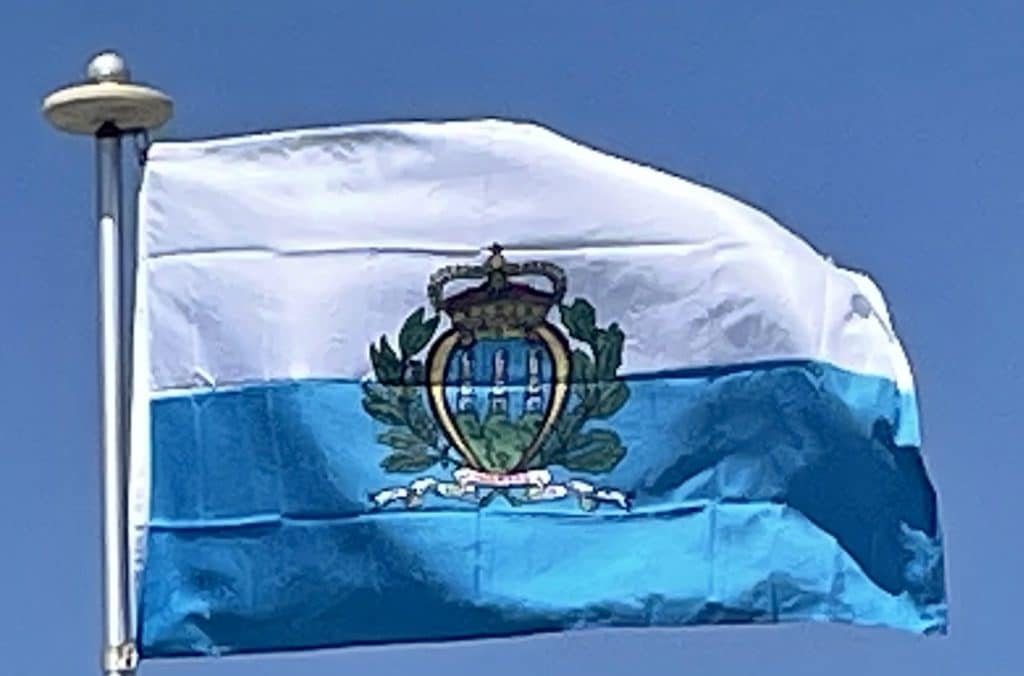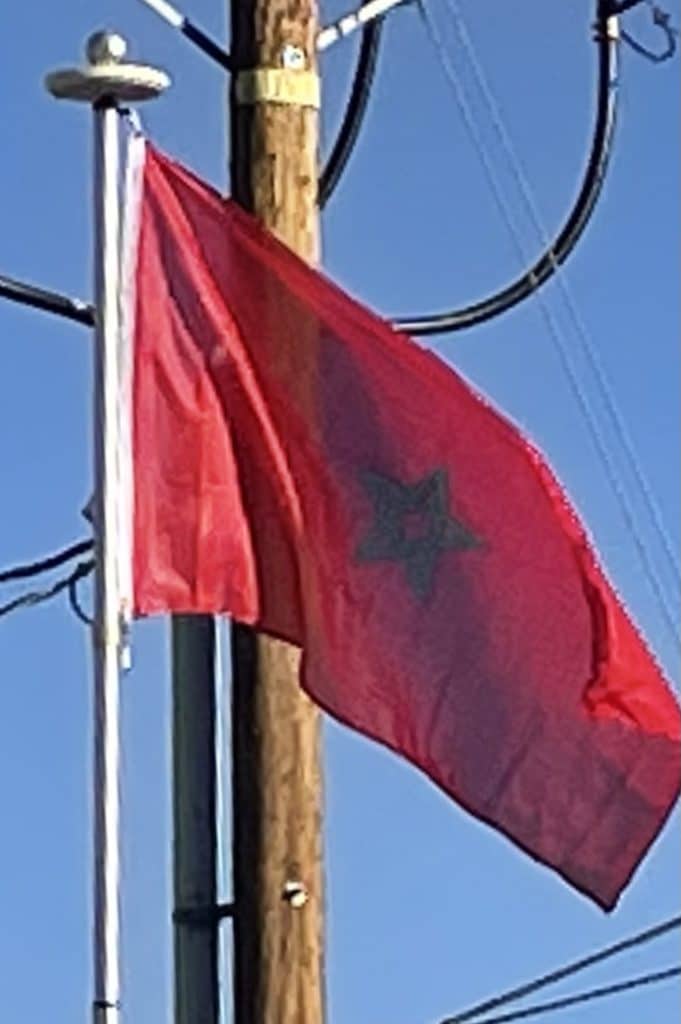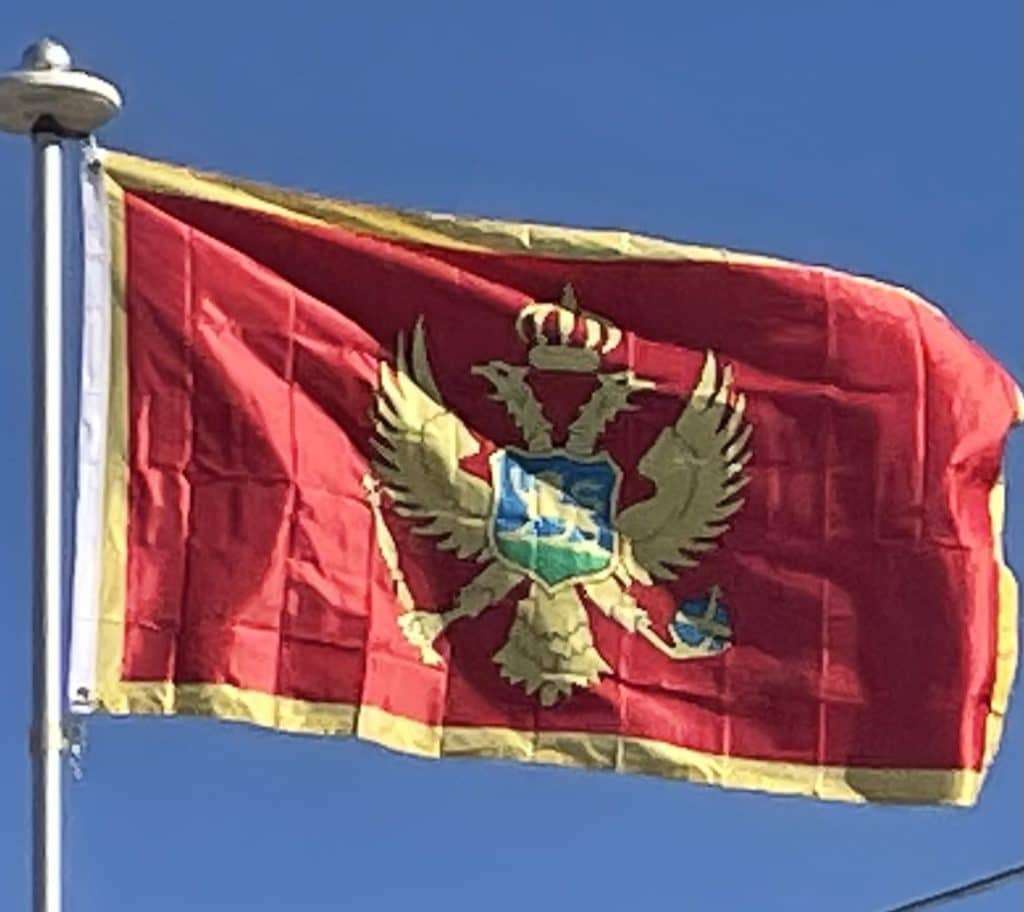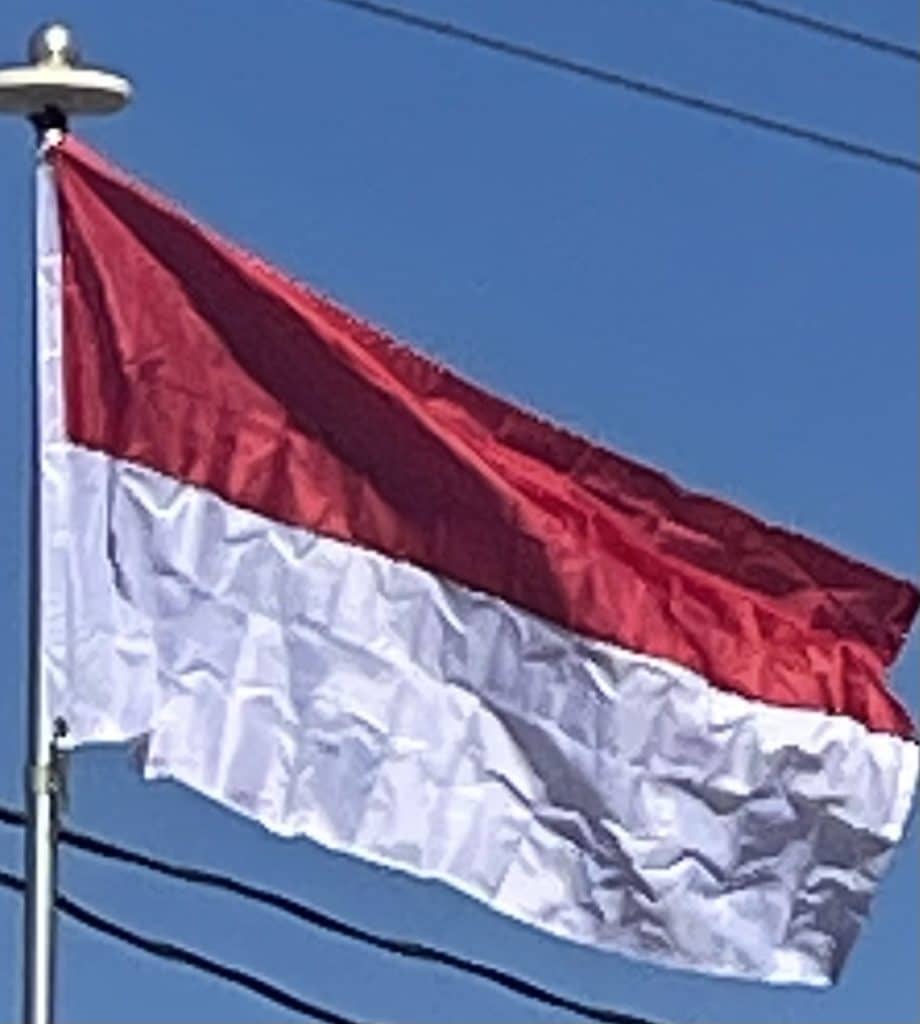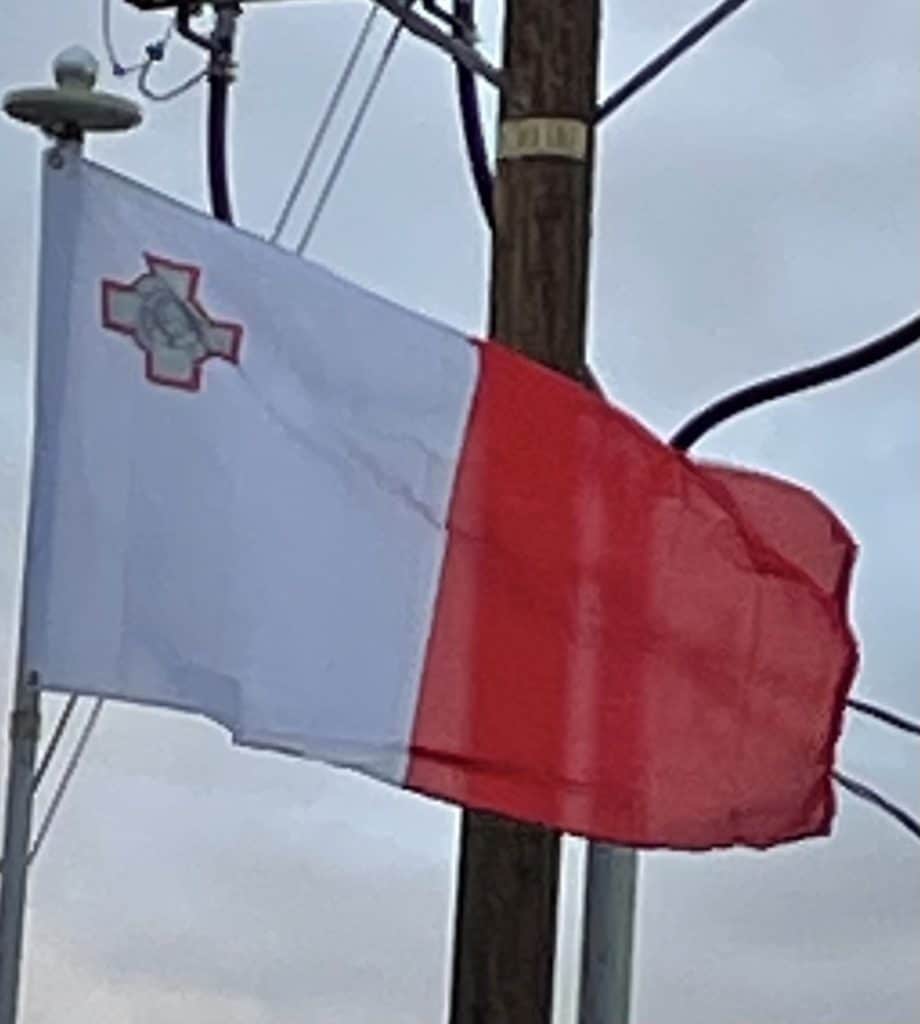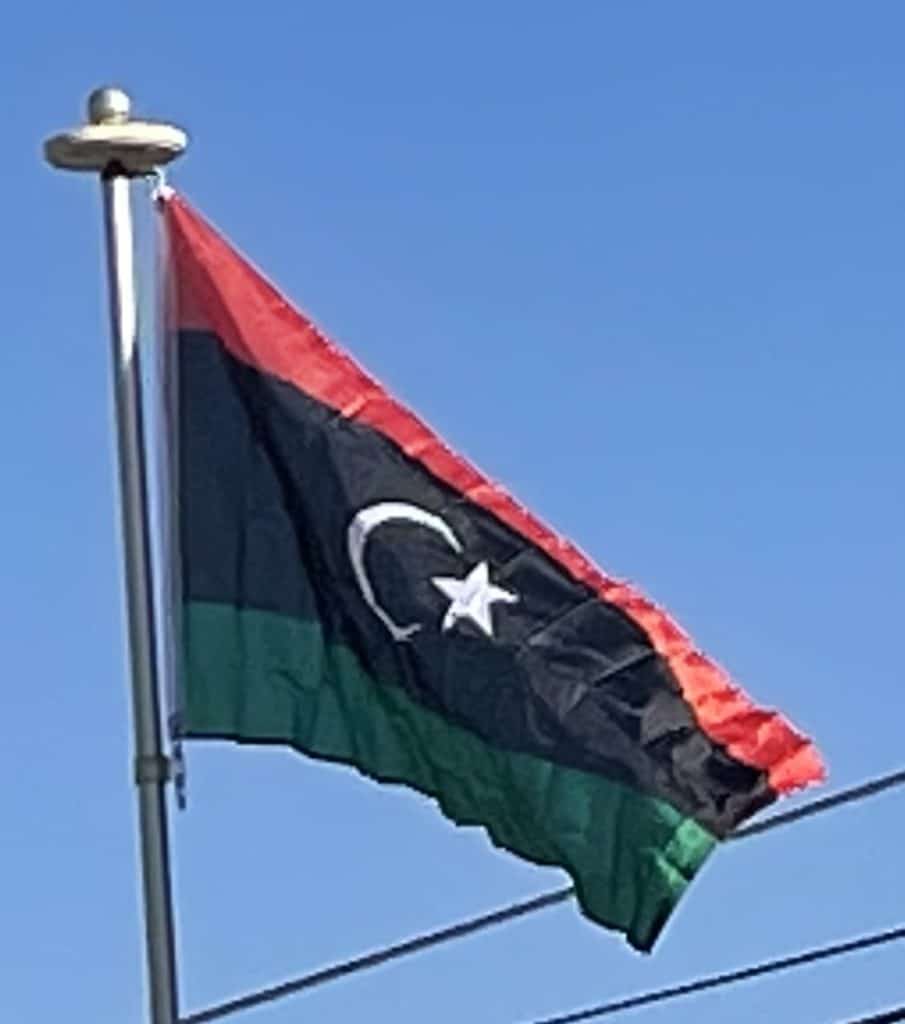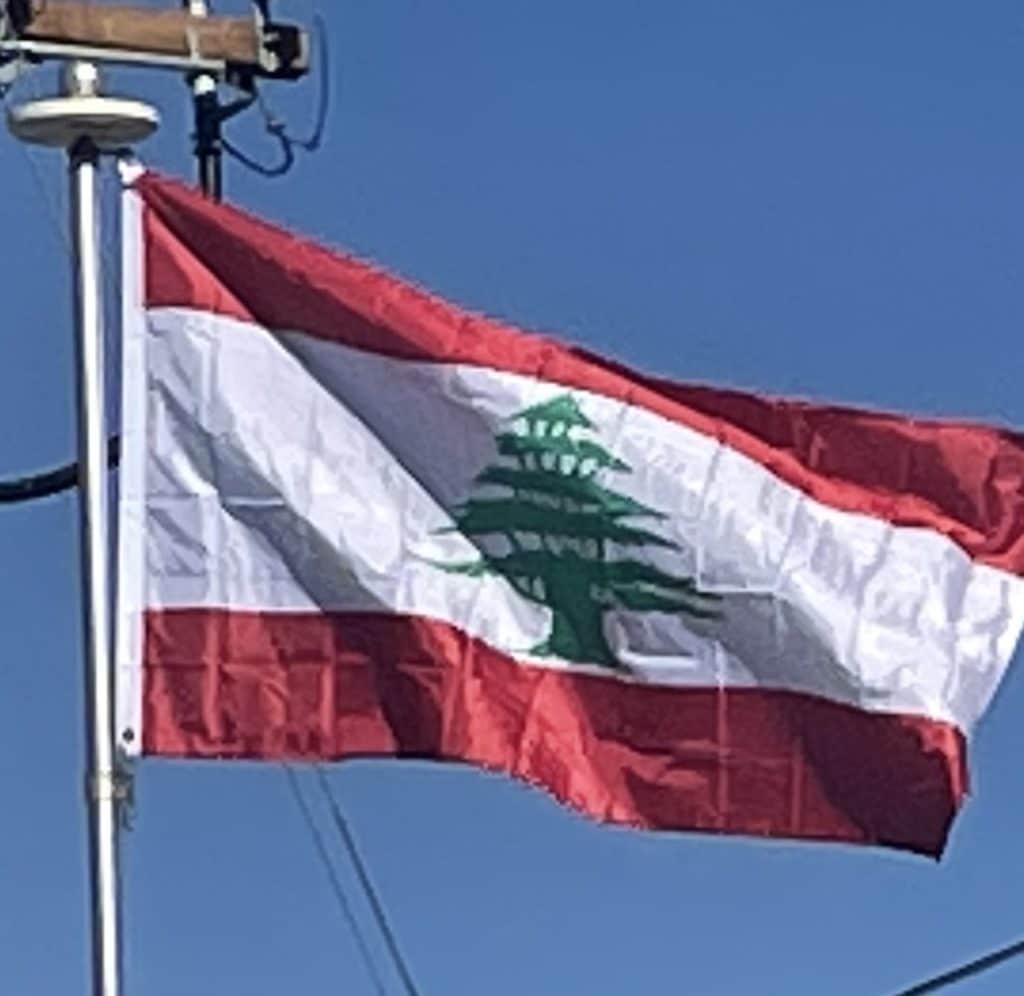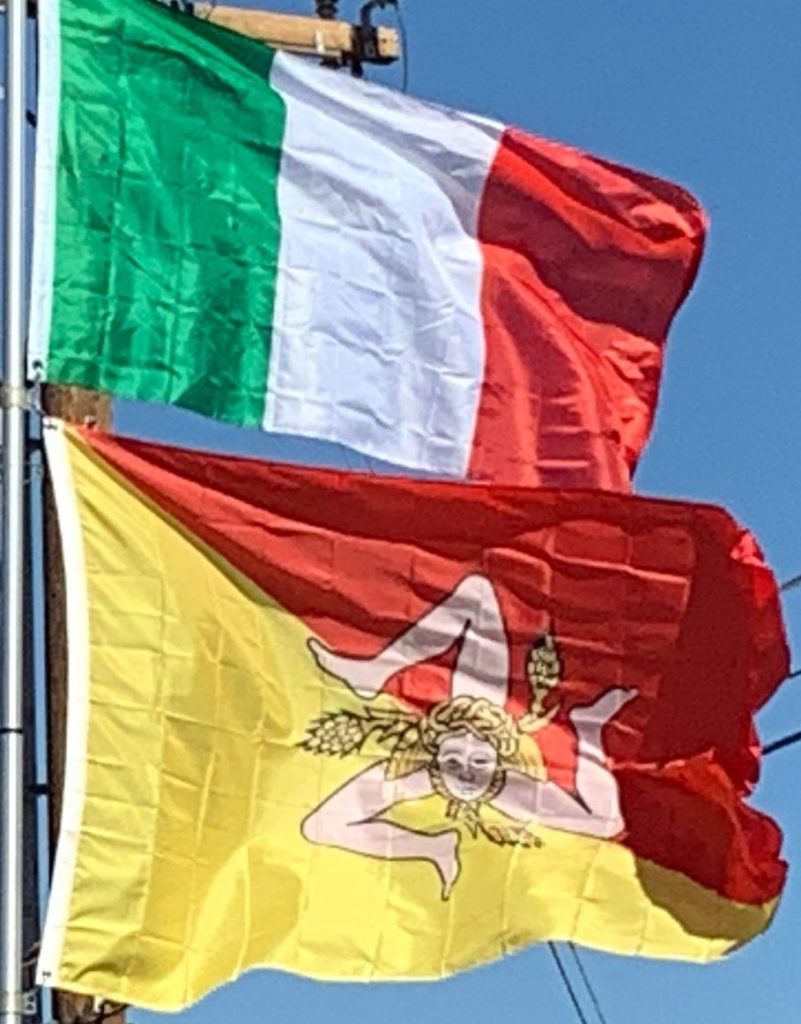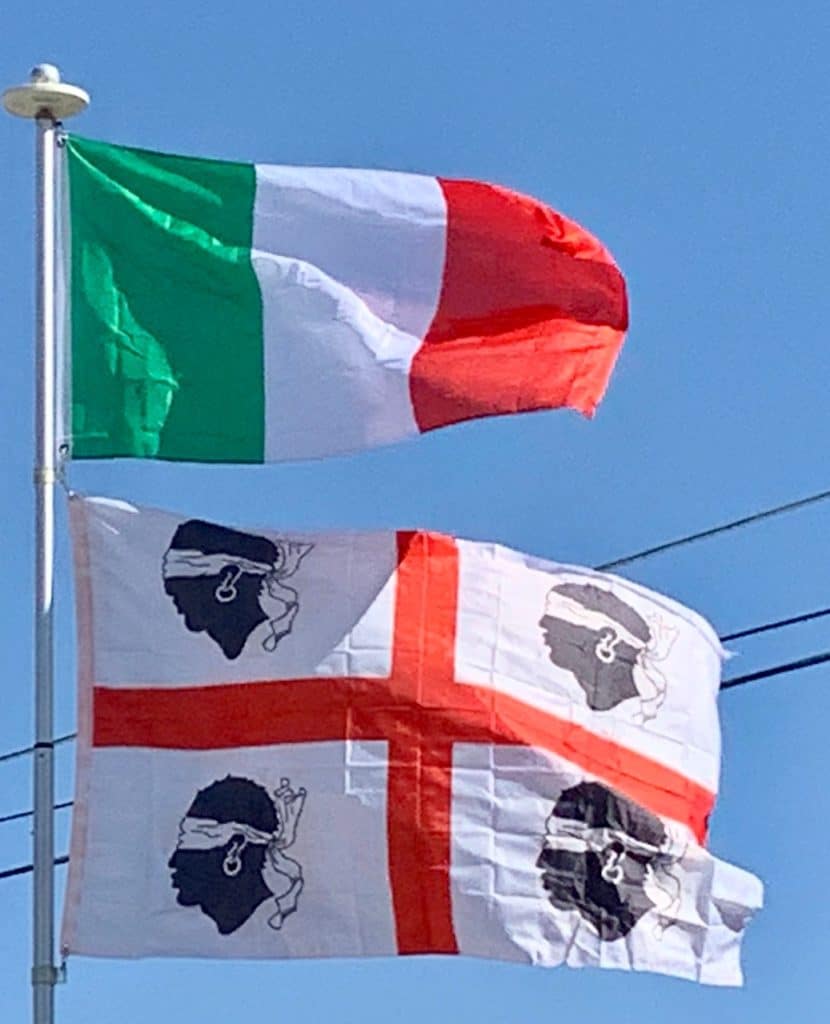San Marino
The state and war flag of San Marino is formed by two equal horizontal bands of white (top) and light blue with the national coat of arms superimposed in the center; the coat of arms has a shield (featuring three towers on three peaks) with a closed crown on top, flanked by an oak and laurel wreath, with a scroll below bearing the word LIBERTAS (Liberty). The two colors of the flag represent peace (white) and liberty (azure).
Although the Law on the flag and coat of arms of San Marino from 2011 refers only to the “official flag” of the republic, a de facto civil flag, which omits the coat of arms, can sometimes be seen flying. Some official sources of San Marino suggest that the civil flag is actually the bicolor with the coat of arms of the specific city it is used in, instead of the national one.
